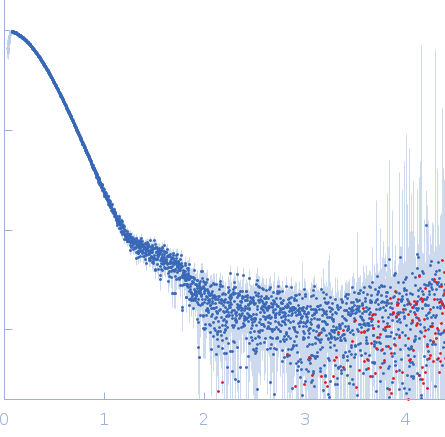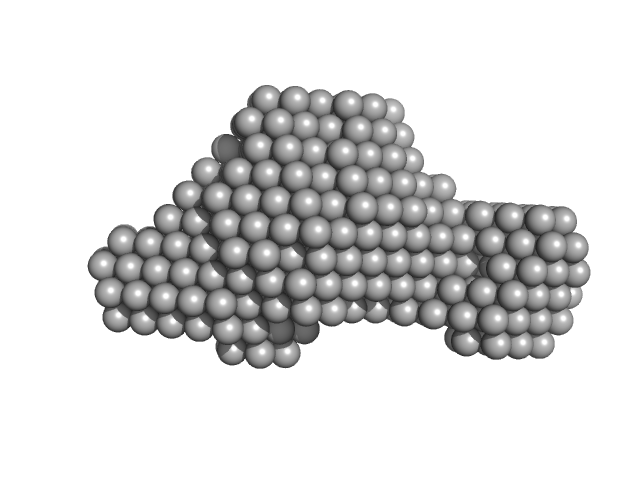|
Synchrotron SAXS data from solutions of SslE in 20 mM citrate-phosphate buffer, 200 mM NaCl, pH 4.4 were collected on the B21 beam line at the Diamond Light Source (Didcot, UK) using a Pilatus 2M detector at a wavelength of λ = 0.1 nm (I(s) vs s, where s = 4πsinθ/λ, and 2θ is the scattering angle). In-line size-exclusion chromatography (SEC) SAS was employed. The SEC parameters were as follows: A 60.00 μl sample at 10 mg/ml was injected at a 0.16 ml/min flow rate onto a Shodex KW403 column at 25°C. 620 successive 0.500 second frames were collected. The data were normalized to the intensity of the transmitted beam and radially averaged; the scattering of the solvent-blank was subtracted.
Storage temperature = UNKNOWN. Sample detector distance = UNKNOWN
|
|
 s, nm-1
s, nm-1
